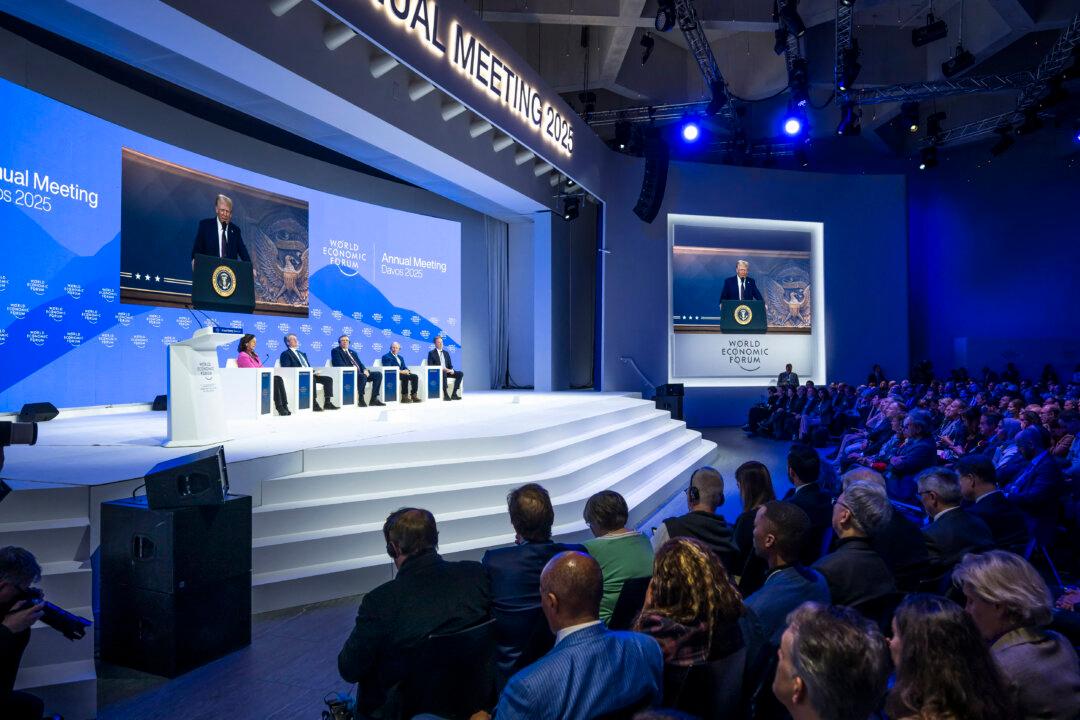WASHINGTON—The United States and Canada entered intense weekend negotiations as a last-ditch effort to save the North American Free Trade Agreement (NAFTA). Trade officials on both sides rushed to hammer out differences before a Sunday midnight deadline.
“Everyone is negotiating in good faith right now as we speak,” White House trade adviser Peter Navarro told Fox News on Sept. 30.
“The deadline is midnight tonight to get text into Congress to make sure this goes forward.”
When talks between Washington and Canada about re-writing NAFTA stalled, the Trump administration decided to move forward with a bilateral accord with Mexico, which was struck on Aug. 27.
While Canada has remained on the sidelines, Canadian officials continued their negotiations on both bilateral and trilateral issues.
The White House and Mexico announced on Sept. 28 that they would release the full text of the bilateral deal that the two countries reached in August. However, they later held off publishing the text, as American and Canadian negotiators re-entered intense talks in an attempt to bridge their differences over the weekend.
Canada has remained resistant to some of the U.S. demands including wider access to the Canadian dairy market and eliminating a dispute settlement mechanism.
In addition, Ottowa has argued tariffs imposed on steel and aluminum imports should be halted as part of a new NAFTA deal.
According to Navarro, the new NAFTA aims to “restore North America as a manufacturing powerhouse by reclaiming our supply chain from the rest of the globe.”
Bilateral Deal with Mexico
The NAFTA region is the third largest producer of light-and medium-duty vehicles and the second largest manufacturer of automotive parts globally, according to the Center for Automotive Research.Under the deal signed with Mexico in August, 75 percent of auto content will be made in the United States or Mexico, up from the original threshold of 62.5 percent.
The higher threshold is aimed at keeping more parts from other regions out, boosting manufacturing and jobs in the NAFTA region.
According to industry experts, the rule would also allow the Trump administration the ability to impose higher tariffs on national security grounds if vehicles do not comply with the new thresholds.
The deal has enforceable labor provisions that require Mexico to comply with International Labor Organization labor rights standards, which will drive Mexican wages higher.
In the new agreement with Mexico, Trump backed off from his initial demand for a “sunset” clause, which required renegotiation every five years. That was one of the sticking points for both Canada and Mexico. The new deal, however, has a 16-year lifespan, with a review period after 6 years, providing more certainty for businesses.
Dispute Resolution System
Mexico agreed to remove NAFTA’s Chapter 19, a dispute resolution mechanism for anti-dumping matters, which put Canada in a difficult position.Canadian Prime Minister Justin Trudeau has said repeatedly that Chapter 19 is a “red line for Canadians” that cannot be crossed. It has allowed them to fight U.S. duties on softwood lumber, paper, and other products.
Canadian Dairy Market
The original NAFTA pact, signed by the United States, Canada, and Mexico, entered into force on Jan. 1, 1994. The pact underpins some $1.2 trillion in annual trade.Under the agreement, tariffs on nearly all products were eliminated progressively by January 2008.
However, Canada has continued to impose high tariffs on dairy products as the country’s politically powerful dairy farmers have resisted changes to the high tariffs that protect them from foreign competition.
Under the current system, U.S. imports exceeding quota levels are subject to excessively high tariffs, such as 245 percent for cheese and 298 percent for butter.
There are some other barriers as well, including restrictions on U.S. grain exports.
Last year, the U.S. goods trade deficits with Mexico and Canada were $71.1 billion and $17.5 billion, respectively.
After his election, Trump pledged to overhaul the terms of NAFTA, denouncing it a bad deal for the United States. Talks to revamp NAFTA began in August last year.
However, a frosty relationship between Trump and Trudeau has made things more complicated recently.
The trade imbalance would change, Trump said in June during a press conference at the Group of Seven (G7) summit in Canada.
“The United States has been taken advantage of for decades and decades, and we can’t do that anymore,” he said. “We’re like the piggy bank that everybody’s robbing.”





